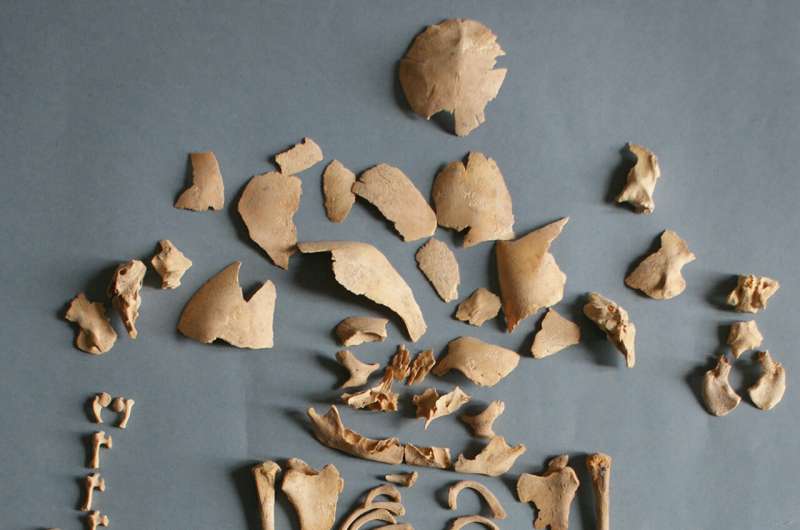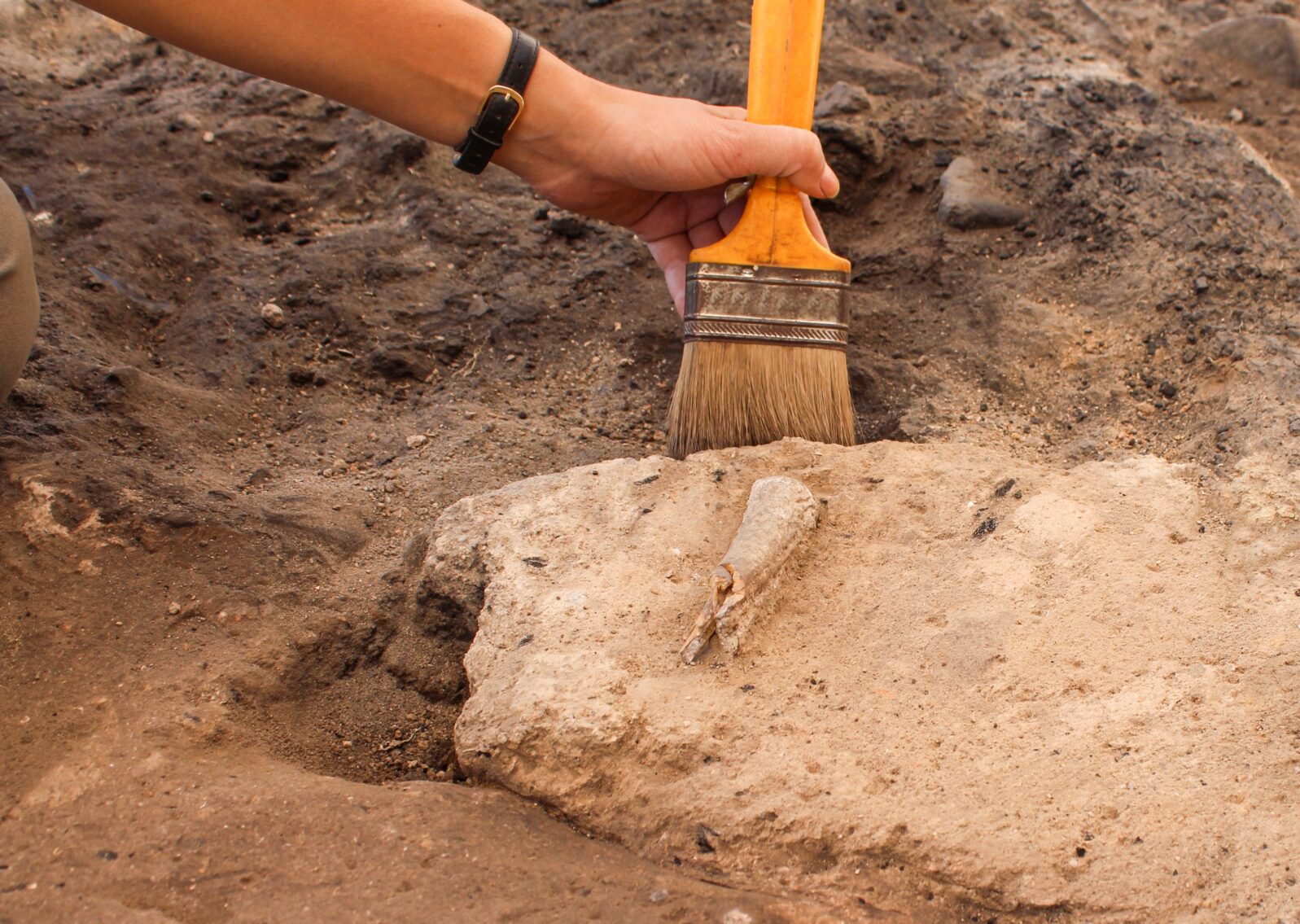Prehistoric Children with Down Syndrome Were Valued, Burials Show
The six found so far from one culture, identified by DNA evidence, did not live long but they were buried with grave goodsWe’ve all probably heard from one pundit or another that prehistoric humans discarded children with disabilities, just as animals might. Well, recently, researchers screened the DNA of 10,000 ancient humans (historic and prehistoric) for evidence of genetically detectible syndromes like Down sydrome. According to their report in Nature, “We find clear genetic evidence for six cases of trisomy 21 (Down syndrome) and one case of trisomy 18 (Edwards syndrome), and all cases are present in infant or perinatal burials.”
Clearly, people with significant genetic disorders could not expect a long life back then. But the researchers were surprised by the respect shown to the deceased children: “Notably, the care with which the burials were conducted, and the items found with these individuals indicate that ancient societies likely acknowledged these individuals with trisomy 18 and 21 as members of their communities, from the perspective of burial practice.”
The five prehistoric burials were all located within settlements and in some cases accompanied by special items such as colored bead necklaces, bronze rings or sea-shells. “These burials seem to show us that these individuals were cared for and appreciated as part of their ancient societies,” says [Adam] Rohrlach, the lead author of the study.
Max Planck Society, Ancient genomes reveal Down syndrome in past societies, Phys.org, February 20, 2024 > The paper is open access via a Shareit token

and was buried in Alto de la Cruz/Gobierno de Navarra/J.L. Larrion
Down syndrome (an extra whole or partial copy of the 21st chromosome, hence trisomy 21 ) is comparatively common (1/1000 births). Edwards syndrome — three copies of chromosome 18 — occurs in 1/3000 births.
Five of these burials of children with Down syndrome date to between 5,000 and 2,500 years before the present, in settled communities. An interesting feature is that the infants were buried inside houses:
“At the moment, we cannot say why we find so many cases at these sites,” says Roberto Risch, an archaeologist of the Universitat Autònoma de Barcelona working on intramural funerary rites, “but we know that they belonged to the few children who received the privilege to be buried inside the houses after death. This already is a hint that they were perceived as special babies.”
Max Planck Society, In past societies
In an article at The Conversation, researchers Adam “Ben” Rohrlach and Kay Prüfer comment,
The fact that three cases of Down syndrome and the one case of Edwards syndrome were found in just two contemporaneous and nearby settlements was a surprise to us.
“We don’t know why this happened,” says our co-author Roberto Risch, an archaeologist from The Autonomous University of Barcelona. “But it appears as if these people were purposefully choosing these infants for special burials.”
“Ancient DNA reveals children with Down syndrome in past societies. What can their burials tell us about their lives?,” February 20, 2024
Generally, when people are buried inside a home (floor burials), they are thought to be good, not bad, in some way. The sixth such burial was in a church graveyard in Finland, dated to the 17th–18th century.
Why were the researchers so surprised?
The researchers may be surprised that the children were treated as members of the community because today considerable effort is made to identify children with Down syndrome prenatally — and most of them are aborted.
But perhaps Wayne Gretzky (in hockey, the legendary Great One), would be less surprised. In 1981, he met and developed a friendship with teenage Joey Moss (1963–2020) who had Down Syndrome. In 1984, he got him a job as a locker room attendant with the Edmonton Oilers. Moss took to League life very well. An ardent fan and great favorite, he was inducted into the Alberta Sports Hall of Fame in 2003. He also received the National Hockey League Alumni Association’s Seventh Man award that year, for those “whose behind-the-scenes efforts make a difference in the lives of others.” This tribute video following his death in 2020 tells the story:
A YouTube commenter writes, “I still tear up when I think of what we lost in Joey. He totally changed the way I deal with handicapped people. Clearly, his name must be in the rafters.”
Gretzky told People Magazine in 2016, “The people of Edmonton have accepted Joey as an everyday person without any sort of handicap and that’s what’s really special about his story.” Meanwhile, Gretzky himself raised money through golf tournaments to build more group homes for people who live with Down Syndrome as adults — something that, of course, didn’t happen much in remote antiquity when almost all life expectancies were short.
If we don’t give people like Joey a chance, perhaps we haven’t advanced beyond our ancestors as much as we think, apart from our better living conditions.
You may also wish to read: Asked at Psychology Today: Were Neanderthals religious? We can’t poll long-dead Neanderthals on life, death, and the hereafter but the evidence we’ve dug up suggests they were thinking about that kind of thing. We must mentally step outside nature to consider things like how the world was created or what lies beyond death. Immaterial minds can do that.
